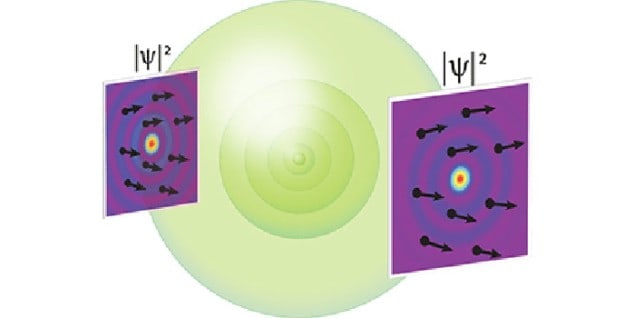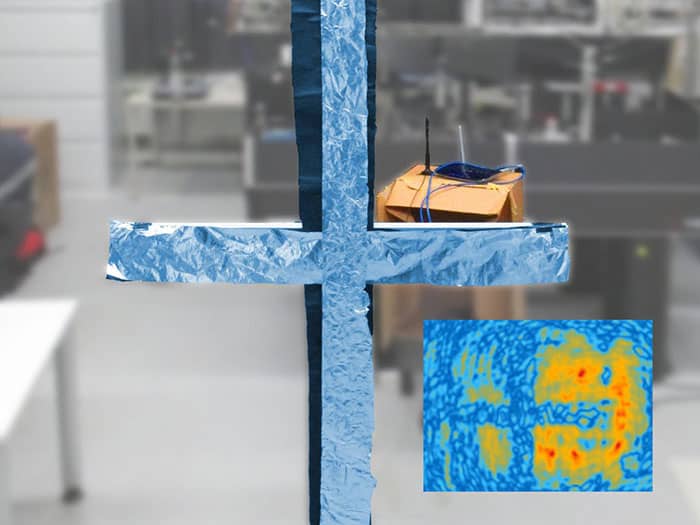Flash Physics is our daily pick of the latest need-to-know developments from the global physics community selected by Physics World‘s team of editors and reporters

Tractor beams could be made from matter waves
It should be possible to create a matter-wave tractor beam that grabs hold of an object by firing particles at it – according to calculations by an international team of physicists. Tractor beams work by firing cone-like “Bessel beams” of light or sound at an object. Under the right conditions, the light or sound waves will bounce off the object in such a way that the object experiences a force in the opposite direction to that of the beam. If this force is greater than the outward pressure of the beam, the object will be pulled inwards. Now, Andrey Novitsky and colleagues at Belarusian State University, ITMO University in St Petersburg and the Technical University of Denmark have done calculations that show that beams of particles can also function as tractor beams. Quantum mechanics dictates that these particles also behave as waves and the team found that cone-like beams of matter waves should also be able to grab hold of objects. There is, however, an important difference regarding the nature of the interaction between the particles and the object. Novitsky and colleagues found that if the scattering is defined by the Coulomb interaction between charged particles, then it is not possible to create a matter-wave tractor beam. However, tractor beams are possible if the scattering is defined by a Yukawa potential, which is used to describe interactions between some subatomic particles. The calculations are described in Physical Review Letters.
3D holograms produced from WiFi routers

Household WiFi routers can be used to produce 3D holograms of rooms. The futuristic imaging process has been developed by Philipp Holl and Friedemann Reinhard of the Technical University of Munich in Germany. Using one fixed and one movable antenna, they measure the distortions in the router’s microwave signal caused by it reflecting off and travelling through objects. The data are then fed through reconstruction algorithms enabling the researchers to produce 3D images of the environment surrounding the router at centimetre precision. The technique is simpler than optical holography, which relies upon elaborate laser equipment, and will have improved resolution when future WiFi technology has increased speed and bandwidth. The research has, however, raised concerns about privacy. “It is rather unlikely that this process will be used for the view into foreign bedrooms in the near future.” Reinhard says to address these worries: “For that, you would need to go around the building with a large antenna, which would hardly go unnoticed.” The method is also limited because microwaves come from so many devices and from multiple directions. Instead, Holl and Reinhard hope the technology, presented in Physical Review Letters, will be applied to recover victims buried under collapsed buildings or avalanches. Unlike conventional methods, it could provide spatial representation of the structures surrounding victims, allowing swifter and safer rescue.
UK nuclear industry outlines “Brexit” priorities
The UK Nuclear Industry Association (NIA) has called on the UK government to work closely with the nuclear industry to avoid a “cliff-edge” scenario after the country leaves the European Atomic Energy Community (Euratom). In its report – Exiting Euratom – the trade association for the UK’s civil nuclear industry, which represents more than 260 companies, outlines six priority areas for negotiations with the European Commission as part of the “Brexit” negotiations. These include agreeing a new funding arrangement for the UK’s involvement in Fusion 4 Energy, which is responsible for providing Europe’s contribution to ITER fusion reactor in France, as well as setting out the process for the movement of nuclear material, goods, people and services post Brexit. The NIA also says that if a new Euratom deal is not agreed by the time the UK leaves the European Union in 2019 then the existing arrangement should continue until a new one is implemented.
- You can find all our daily Flash Physics posts in the website’s news section, as well as on Twitter and Facebook using #FlashPhysics. Tune in to physicsworld.com later today to read today’s extensive news story on the laser cooling of triatomic molecules.



